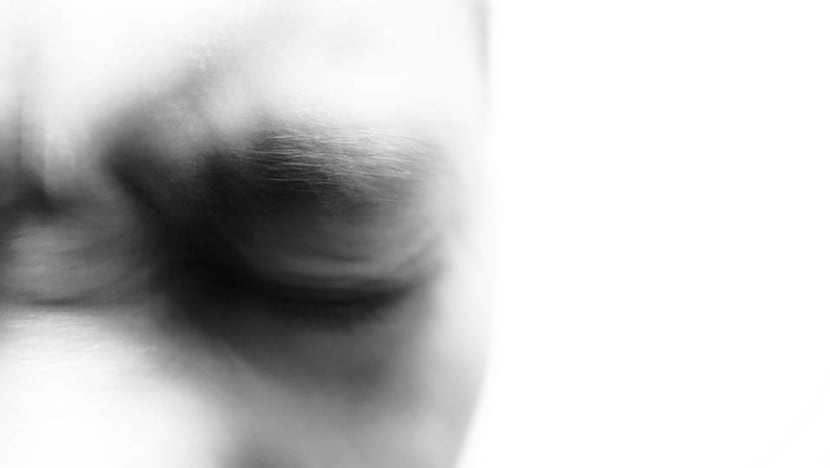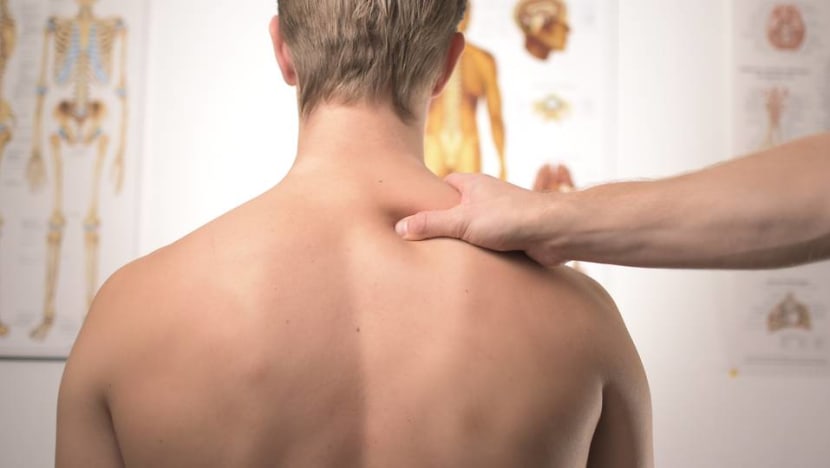commentary Commentary
Commentary: Look up! Constantly looking down at your phone is causing you back and neck pain
But the good news is, not all neck and back pain will require intrusive treatments. Still, you should get your condition checked, says head and senior consultant at NUH’s University Spine Centre, Gabriel Liu.

(Photo: Unsplash/Andrew Le)
SINGAPORE: Amy*, suffers from a chronic back and neck pain that intermittently flares up for a few days or weeks before it returns to normal.
Initially, doctors recommended reducing the time she spent looking down at her phone, adjusting her sitting and standing postures, and her position when doing housework, as well as getting ample rest to help lessen the pain. But despite these lifestyle changes, her condition worsened.
Over time, Amy started to experience pain running down from her back to her bottom and the outer side of her legs.
READ: Getting rid of a pain in the neck: Chiropractic Association calls for regulation of industry
After seeing someone at a specialist clinic, Amy finally found what’s causing the pain. An initial X-ray showed a degenerated curved spine and further MRI scans showed nerve compression in her lower back.

BACK AND NECK PAINS ARE COMMON
But the neck and back pain that Amy experienced are not uncommon.
In fact, a Global Burden of Disease (GBD) study has identified lower back pain as a health problem worldwide and categorised it as one of the top ten common conditions and challenges in this century.
GBD found in 2015, that over half a billion people worldwide had lower back pain and more than a third of a billion had neck pain which persists for more than three months.
Based on a 2017 NUH study that surveyed more than 7,000 Singaporeans who were more than 40 years old, we estimated that one in 10 will have scoliosis (a curved spine) in the lower back of the lumbar spine region.
Furthermore, from the year 2009 to 2018, the University Spine Centre at the National University Hospital (NUH) saw a 33 per cent increase in the number of referrals for spine conditions.
While there is no definitive study in Singapore to identify the cause for this, the reasons for such an increase may be due to poor sitting and standing postures, and lifestyle-related factors.

READ: Spinal manipulation can help ease low back pain
Basic science studies have demonstrated that excessive forward bending of the spine - such as when you’re looking at your phone - can lead to spinal disc degeneration.
In the last decade, lifestyle changes due to prolonged sitting from computer usage and the use of mobile handheld devices involving prolonged forward bending of the neck and back may be possible reasons that can lead to early spine degeneration and pain.
But despite the high prevalence of spinal pain, not all neck and back pain will require extensive treatment or surgical intervention, as most of these adult spinal curve deformities are mild.
A benign spine degeneration condition will only require posture corrections and physiotherapy.
HOW TO KNOW IF YOUR BACK PAIN IS NORMAL
Some back pain, however, can be more serious. Persistent neck or back pain that run down to the limbs may indicate a more serious spinal injury that require medical attention.
To know whether your back pain needs serious attention, you should look for the presence of red flags which include: Pain after trauma (like a fall or road traffic accident), the presence of neurological deficit (such as leg or hand numbness), difficulties in urinating or bowel movements, and unsteady gait.
Back pain experienced by those with a history of cancer, osteoporosis or rheumatological conditions can point to an even more serious condition.
Spinal pain that causes fever and unexplained weight loss of more than 10kg within six months, spinal pain at rest or pain that wakes one up at night (different from experiencing difficulties falling asleep), progressive spinal deformities (curved spine or progressive hunch back), and pain that persists for more than four to six weeks after treatments, are some other red flags.

Should any of these symptoms occur, one should seek medical attention so that the doctor can do an assessment of the spine, which may include X-ray or MRI examinations.
In Amy’s case, she subsequently underwent spinal decompression, which helps to relieve the spinal nerve, and a correction of her spinal deformities through minimally invasive spine surgery, which has helped her return to her daily lifestyle.
SPINAL PAINS CAN BE MANAGED
More often, these spinal pains can be managed. Pain killers, muscle relaxants and physiotherapy or acupuncture can help you manage spinal pain.
Back braces can help to temporarily reduce back pain, but one should limit its use to one to two weeks at the onset of the pain, as prolonged usage of the brace in acute back strain will weaken the back muscle and affect spine muscle recovery.
By maintaining good posture and exercising regularly, you can reduce pain development and occurrence.
*The names used in this commentary are pseudonyms
Associate professor Gabriel Liu is head and senior consultant at the University Spine Centre at the National University Hospital.














